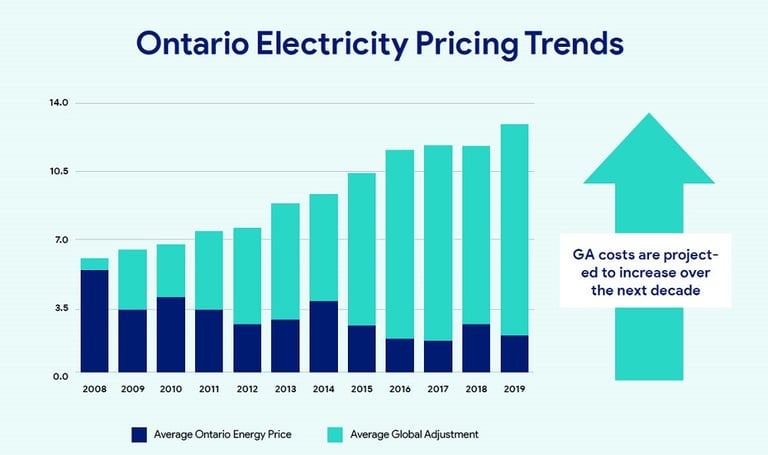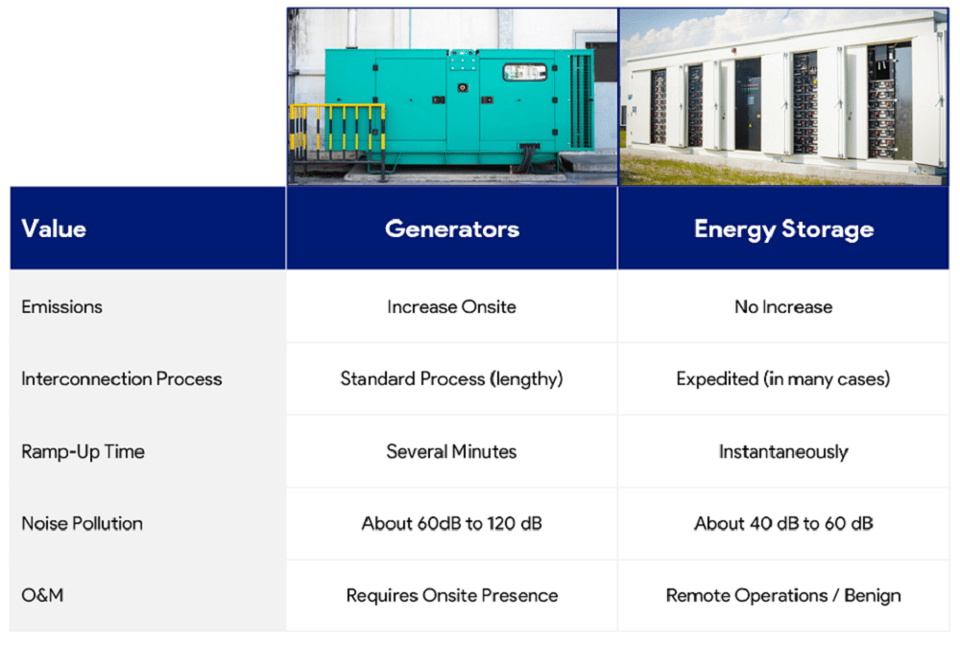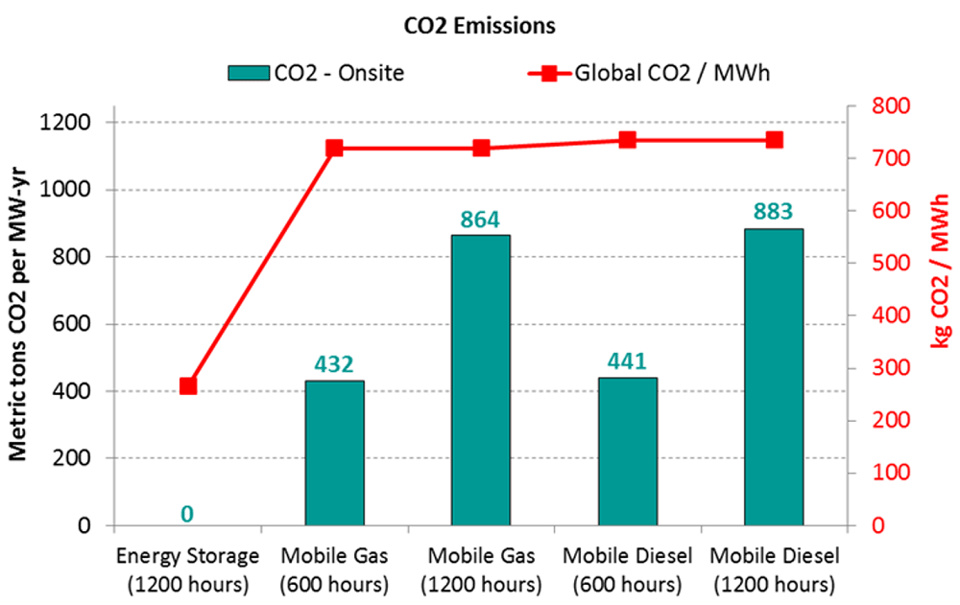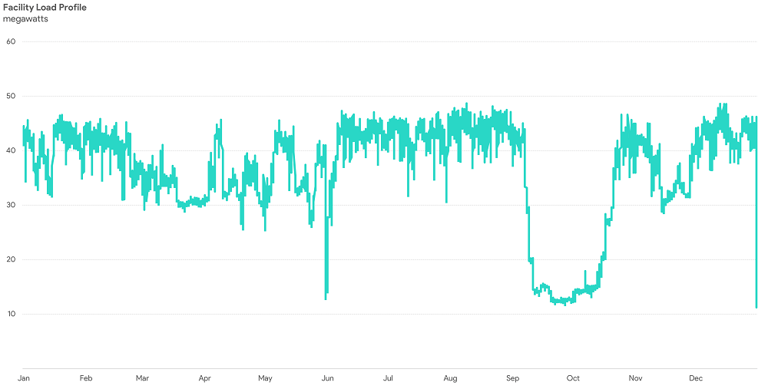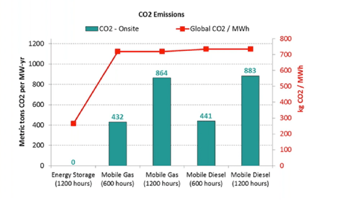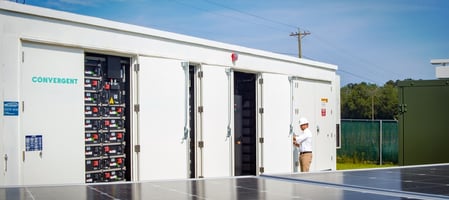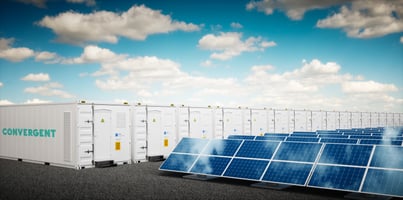Energy Storage Versus Generators: the Case for Battery Storage in Ontario

It’s a fact: energy is expensive and, for a majority of our customers, prices are only going up. Businesses are looking for smarter, greener, and cheaper electricity. With energy storage, it’s possible to have all three of these benefits at the same time.
For businesses in Ontario, reducing electricity costs is especially important given the Global Adjustment (GA) charge. When curtailment, which is the most cost-effective way to reduce electricity costs, is not a viable or attractive option, the choice becomes either a battery energy storage system or an industrial generator.
Having worked in energy for over a decade, I’ve helped commercial and industrial companies across North America, including those on the Fortune 5 and Fortune 500 lists, navigate this decision.
To be transparent, I work for Convergent Energy + Power (Convergent), the largest owner and operator of battery storage in Canada but we’re committed to helping businesses find the best solution for them, whether or not it’s storage.
Overall, generators are generally more cost-effective upfront but energy storage can provide greater financial and environmental value over the life of the system—and support a company’s corporate social responsibility goals at the same time.
Whichever solution you choose, you’ll be able to dramatically reduce the electricity costs at your facility, allowing your business to stay cost competitive and keep or hire more employees. A battery and generator provide comparable savings, with generators potentially edging out the battery in some instances.
Yet, we know that savings is rarely the only consideration for a given business. There are always additional company priorities.
Once it’s clear that batteries and generators are cost competitive, there are an additional five values (or considerations) that we see when it comes to determining if a battery or a generator is right for your facility. Let’s break them down.
But First…What is the Global Adjustment Charge and why is it so High in Ontario?
Large commercial and industrial power consumers in Ontario pay 65% more for electricity than
large consumers in the rest of Canada. This is due to the structure of GA, which is calculated based on a facility’s electricity usage during the top five peak demand hours in a given 12-month period. The savings generated by using electricity from a battery or generator during the top five peak demand hours is currently valued at $450,000/MW. If your facility’s load is over 5 MW, that’s a saving of over $2 million per year!
Energy Storage or Generator, that is the Question
Consideration #1: Emissions
There are two main forms of generators—diesel and natural gas – both are dependent on fossil fuels and produce criteria air pollutants such as sulfur dioxide, particulate matter and carbon monoxide, as well as greenhouse gas emissions. If you decide to bring a generator to your site, you will also bring additional emissions and pollutants to your facility, increasing your carbon footprint at a time when governments and residents are increasingly calling for more renewable energy.
Convergent recently conducted a study on energy storage to compare the emissions of battery storage versus mobile generators.
As you can see, installing a battery storage solution at your facility is essentially emissions-free with a significant pay off. Energy storage actually reduces greenhouse gas emissions by pulling and storing power from the grid at off peak hours, when the energy mix is cleanest, and dispatching it during grid peaks, when the grid is most carbon-intensive.
Not only is storage the cleaner, greener option but the impact is minimal on the land itself. When a project is completed, the land where the battery sits can be restored to its original state without the fear of brownfield contamination.
Consideration #2: Interconnection Process
Any kind of interconnection of distributed generation is going to be a challenge, that’s the reality.
Generators, however, are notoriously difficult to move through the interconnection process when running in parallel with a utility. To get a generator interconnected requires you go through the standard, lengthy process. Capturing and using waste heat from generators (or turbines) through combined heat and power (CHP or co-gen) can improve the efficiency of a generation asset. The downside of CHP, however, is that it imposes greater capital requirements and tends to limit the ability to match electrical generation to the full demand of the facility, leaving a customer still exposed to costly GA charges.
In many cases, the interconnection process for energy storage is expedited. Especially with larger batteries, we can expedite the process because the battery and inverter systems do not present the same challenges to the grid as a generator does. At Convergent, we handle and manage the interconnection process to make getting your energy storage solution set up and operational as soon as possible.
Consideration #3: Ramp-Up Time
Generators only work if they have fuel. Moving the fuel to the generator requires pressurized systems, storage tanks, and time. They can take up to several minutes to get up to full power while energy storage is instantaneous.
The instantaneous nature of energy storage makes it a preferred solution for customers looking for sub-second responsive times and the immediate availability of energy.
4: Noise Pollution
No one likes a noisy neighbor. Fossil fuel generators can produce anywhere from 60-120 decibels of noise pollution. 120 is almost as loud as a jet engine!
Energy storage solutions are virtually noiseless and the HVAC systems that cool the assets are unnoticeable.
5: Operations and Management (O&M)
Another critical value to consider is the added responsibility and load on your team to manage either a generator or a battery.
Generators need to be monitored 24/7 due to the high range of variables that need to be maintained for them to run. If you invest in a generator, you should be prepared to hire someone on site to run the generator, especially if you are depending on a co-gen plant. Over time, the generator will need oil changes, filter changes, and in the case of emergency generators, will need to be run on a weekly or monthly basis into a load bank to ensure that they are working. The lifespan of your typical generator is around 10-15 years and will need to be replaced entirely at the end of its life.
Batteries offer a different kind of solution. While it’s true that a battery is essentially a paperweight if it is not being properly managed, batteries can be run and discharged remotely. Here at Convergent, we remotely dispatch our storage assets at the most strategic, cost-effective times, removing the responsibility of operating or maintaining the system. We guarantee our assets will perform at nameplate capacity throughout the contract.
When a battery has reached the end of its use, we’ll remove the system at our cost.
CASE STUDY: A Large Petrochemical Facility in Sarnia, Ontario Reduced its Electricity Bill Over $5 Million per Year
Put yourselves in the shoes of the energy manager facing the following load profile and electricity costs that add up to over $5 million per year …
Curtailment would be the most cost effective option but what if you could not curtail given your operations? Perhaps you could install a behind the meter generator? For this facility, a behind the meter generator was not an option. But they could partner with a developer for a battery energy storage system to offset their GA costs.
The facility chose to partner with Convergent. We installed a 10 MW / 20 MWh battery with two hours of capacity (10MW or smaller is easier to interconnect than a larger system). We financed, own, and operate the system on behalf of the facility and share in the savings created.
Making the Choice that’s Right for You
Naturally, savings are critical to businesses facing tight margins, competition, and supply chain issues. Once the economics make sense, however, there are other factors your facility might prioritize, particularly sustainability or emissions reductions.
When it comes to choosing between a generator and a battery, a lot depends on the specific needs of your facility—and what is most important to your business and how important the five considerations listed above (emissions, interconnection process, ramp-up time, noise pollution, and O&M) are to you and your team.
Fun fact: Convergent was the first company to develop a behind-the-meter battery storage solution in Ontario and owns and operates over 80% of the systems online in the Province!
We are happy to work with your team to determine if storage is right for your needs. Reach out to us or email me directly at ttiktinksy@convergentep.com to start the conversation!

Toby is responsible for originating, negotiating, closing, and developing behind-the-meter projects with commercial and industrial clients, while supporting the firm’s overall business development strategy.

